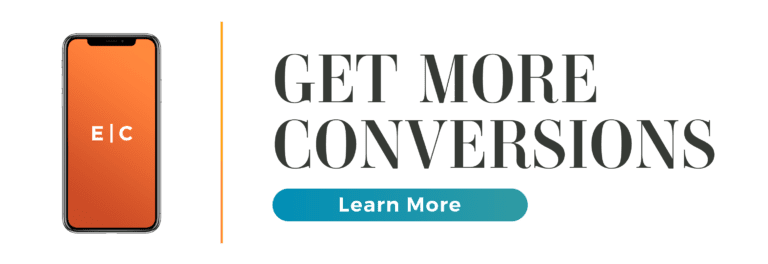HubSpot is one of those powerhouse marketing automation tools you’ve heard about and now you are the proud owner of a bouncing baby HubSpot account. Hooray! Yipee! Mazel tov!
But what’s next?
One of the things I see a lot? Businesses excitedly purchase HubSpot and then…nothing. Contact imports may trickle in but for the most part, HubSpot becomes one of the most expensive tools your company isn’t using.
The good news? We know what it takes to get everyone onboard and excited about integrating HubSpot into their daily work lives and we’re sharing some of our tips with you today.
HubSpot Integration Rule #1: Always Have a Plan
While it seems like purchasing the tool itself is a plan, it’s only the first step in many to get your HubSpot account up and generatin’ those leads! Here are a few things to think about to get your HubSpot plan started:
- Who is the HubSpot Gatekeeper?
While I am SUPER tempted to also ask you to designate a Key Master (#classic), I’ll refrain because this is a serious issue that requires serious seriousness. The HubSpot Gatekeeper should posses the following attributes:
- Familiarity with the tool and its purpose
- MarTech or CRM experience to help figure out how to get it all together
- Bandwidth and time because HubSpot isn’t a flip of the switch, it’s a multi-step process that requires time, attention, and strategy
- Connections to both Sales and Marketing teams as both of these teams should be using the platform in order to make the most out of it
Whoever you choose, make sure they can organize the project and see it through to the end.
2. What is the time frame for adoption?
Depending on the size of your organization, how many people will be using HubSpot, and how many other tools you need to integrate or phase out, this process can take months. There is a period of training with HubSpot but, depending on what tier you’re on, that service may be limited. While the HubSpot Academy and blog are AMAZING and full of How Tos and detailed answers to your FAQS, it’s best to use live expertise whenever you have it.
3. Have an operations calendar
This is a little bit of everything! Have your Gatekeeper help make this and use it to keep your implementation of HubSpot on track and in the timeframe you agreed upon. Make sure you know what tools you’ll be using and how they’re going to be used. Ask your HubSpot manager and your team what makes sense and then put together an ops plan for training and adoption.
4. Get your team excited
One of the biggest roadblocks to the effectiveness of HubSpot? Adoption. I’ve worked with clients who had HubSpot for years (yes, years, you read that right) and no one was using it but one or two people and those people were using it rather sparingly. This makes my stomach hurt. The reason this happens? The team just doesn’t know how to use it and thus can’t get excited about how AWESOME it can make their lives by saving time and upleveling their inbound and outbound campaigns.
I could go on and on about how to get your team excited about a new tool but here are a few quick tips:
- Keep your team updated! Let them know where you are in the process and how soon they get to be involved.
- Highlight WHY this is exciting: new tools, updated looks, easier to use modules, increase lead generation, better reporting–whatever floats their boat let them know about it!
- Make the rollout kind of a big deal. Have a cake, make a sign, compose a sonnet (maybe don’t but if you do please send it to me), do SOMETHING to make the grand unveiling out of the ordinary.
HubSpot Integration Rule #2: Know Your Tools
HubSpot comes with a LOT of things, like ALL of the things. Will you use all of them? Maybe not but you never know if you don’t make yourself familiar with all of the bells and whistles it has to offer. Here are the things we always recommend that clients set up first:
Contacts
Having contacts in your system is the backbone for your overall HubSpot strategy. While you will be adding to the contacts in your database through your lead generation and automation efforts, it’s good to start with a base.
Personas
Personas are a critical part of your marketing strategy. They tell you who your target audience is, what they care about, and what kind of content or solutions they need to see in order to buy. Putting them into your HubSpot account means everyone on the team has access to this information and, as you add contacts to your database, you can assign personas to them to help send them more targeted, relevant content to help them convert faster.
Lead Scoring
Lead scoring is a simple points system you create that adds or subtracts points to a prospect based on their activities with your assets. It’s important to set this up so you can let prospects qualify themselves as they do their research on your business or service before they reach out.
Creating lead scoring is not a set-it-and-forget-it scenario– as you add new content marketing pieces to your site, you’ll want to update your lead scoring to make a more complete and up to date scale for your prospects. This is a great way to help identify when an MQL is ready to become an SQL.
Social
HubSpot allows you to schedule and track social media messaging through its own social scheduling tool. We recommend testing this out to make sure it works for your needs. We’ve had some issues with LinkedIn and Instagram posting looking a bit off compared to posting natively on the platform, so be sure you’re paying attention to the posts once they’ve been published through the HubSpot tool to make sure they look the way they’re intended.
BEFORE YOU BEGIN: You must have access to your company’s social media accounts in order to add them into your HubSpot account. If you are not an admin you’ll either need to be made one or have the social media manager or specialist on your team connect the accounts to HubSpot for you.
Forms
Depending on how you want to proceed, you can either create HubSpot forms and connect them into your site and other content or you can use a tracking code to set up HubSpot tracking through native or third-party forms (like Gravity Forms).
CTAs
Your Calls to Action (CTAs) will more than likely be something you create as you go but, if you have a pre-existing set of CTAs you use frequently, why not build them now and save yourself some time down the road?
HubSpot has an easy-to-use CTA creator that allows a lot of flexibility for button style, size, and coloring. If you need a little help, be sure to let your designer or agency know so they can provide sound advice and help getting these to look just right!
Email Templates
Whether you’re sending a newsletter, a product announcement, or a simple drip campaign, you’ll want to have a few different, branded email templates ready to go.
HubSpot Integration Rule #3: Make the Platform an Integral Part of Your Day
HubSpot is not a strategy, it’s a tool to use. Like any tool, you get more comfortable and handier with it the more you use it. Making sure everyone who should use it (Sales, Marketing, Social, Accounting, Leadership, etc.) is actually using it is a big part in making HubSpot work the best for you.
In order to make anything a habit, you must schedule it into your day. Make sure that you pick a time or times throughout the day to check in with HubSpot, whether it’s to add a note to a contact file, create a report around a new email campaign, check-in on social metrics, or building a simple landing page–making HubSpot a habit means more seamless integration and high adoption rates.
HubSpot Integration is Not Quick and Easy…
…but it is worth it. Like any tool, if used correctly it can make a huge, positive impact for your business. Not sure if you have what you need to really kick it into high gear? Reach out to us! We’ve helped clients with their HubSpot implementation from contact importation to custom template design all the way to strategy and execution of a full inbound marketing plan.
-FINAL(01-00)-White&Blue-01.svg)





